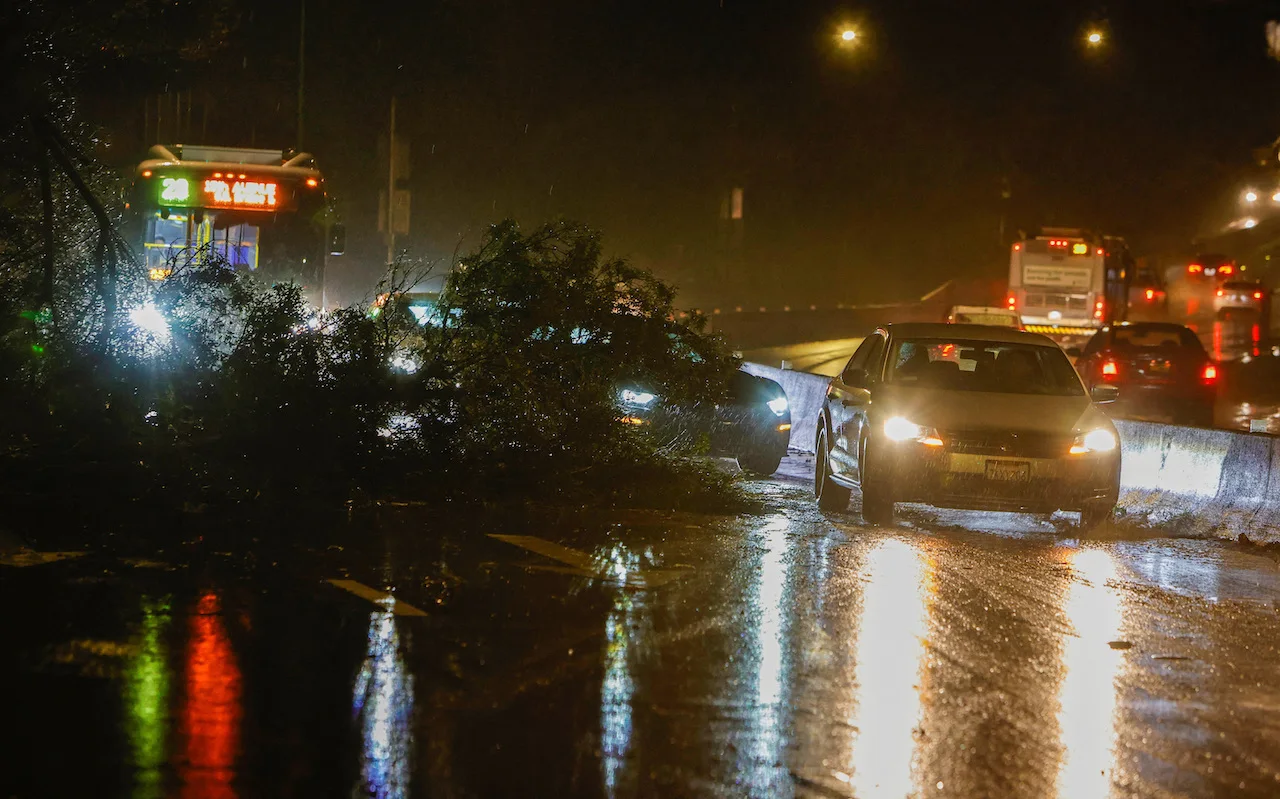
California lashed by deadly 'atmospheric river' storm
Authorities have reported at least two weather-related deaths from the latest storm. A tree that crashed onto a home overnight killed a 1-year-old baby boy, and a 19-year-old woman died when her car skidded off a partially flooded road into a utility pole on Wednesday.
By Sharon Bernstein and Kate Fishman
SACRAMENTO, Calif. (Reuters) - A massive Pacific storm unleashed high winds, torrential rains and heavy snow across California for a second day on Thursday, knocking out power to tens of thousands of homes and threatening much of the state with flash flooding and mudslides.
At least two fatalities have been reported since Wednesday.
The deadly storm was powered by two overlapping phenomena - an immense airborne stream of dense moisture flowing off the ocean called an atmospheric river, and a sprawling, hurricane-force low-pressure system known as a bomb cyclone.
RELATED: California soaked by 'atmospheric river' storm that kills child
The blast of extreme winter weather marked the third atmospheric river - and the strongest - to strike California since early last week, with at least two more back-to-back storms forecast over the next several days.
The San Francisco Bay area, state capital Sacramento and the surrounding region were still recovering from extensive flood damage, including levee breaches along the Cosumnes River, when the new bout of showers hit.
The National Weather Service (NWS) predicted widespread rainfall of 1 inch (2.5 cm) per hour, with snow in the Sierra Nevada Mountains and Southern California's coastal ranges falling at the rate of 3 inches (7.6 cm) an hour, making road travel treacherous.
The NWS also warned of likely flash flooding and mudslides, especially in areas still saturated from previous storms and with fire-ravaged hillsides stripped of vegetation from past wildfires.

Television reporters stand by a damaged gas station in Daly City, after rainstorms known as "atmospheric river" slammed northern California, U.S., January 5, 2023. REUTERS/Carlos Barria
High-wind advisories warning of gale-force wind gusts were posted up and down the state, as uprooted trees, already weakened by prolonged drought and poorly anchored in rain-soaked soil, knocked down power lines and blocked roadways.
Human toll
Authorities have reported at least two weather-related deaths from the latest storm. A tree that crashed onto a home overnight killed a 1-year-old baby boy, and a 19-year-old woman died when her car skidded off a partially flooded road into a utility pole on Wednesday.
Four other deaths have been attributed to the New Year's weekend storm that swept northern California - three flood victims found in or near their cars and an elderly man found dead under a fallen tree.
As many as 180,000 homes and businesses were without power early on Thursday, according to data by Poweroutage.us.

Traffic navigates around downed tree limbs along 19th Avenue after a new bout of rainstorms threatens to flood San Francisco, in California, U.S. January 4, 2023. REUTERS/Peter DaSilva
Flooding, fallen trees and power lines left major roadways impassable in Point Arena and Gualala, two small Mendocino County coastal communities about 125 miles (201.17 km) north of San Francisco, which have experienced blackouts since Wednesday.
Big River Beach, a picturesque and popular destination for tourists and locals alike about 35 miles farther north in the village of Mendocino, was almost unrecognizable with uprooted trees and debris scattered across mounds of sand awash in pools of standing water.
A short drive farther up the coast at Noyo Harbor in Fort Bragg, professional urchin diver Grant Downie said he moved his boat out of the water ahead of the storm as a precaution.
"The boat, insured or not, I feel safer with it on the truck getting hit by a tree than sinking in the water," he said.

A local resident crosses a street as rainstorms hit the city of San Francisco, in California, U.S., January 4, 2023. REUTERS/Carlos Barria
For Californians, the latest series of storms vividly illustrated the consequences of warmer sea and air temperatures wrought by climate change, producing atmospheric river storms with increasing frequency and intensity in the midst of extreme, multi-year drought.
California in state of emergency
Governor Gavin Newsom declared a state of emergency on Wednesday, and state officials urged Californians to avoid travel.
Crews in San Francisco spent the night cleaning up debris from felled trees that blocked roadways. The city's fire department rescued a family trapped when a tree fell across their car.
Authorities advised Sonoma County residents near the Russian River between the wine country towns of Healdsburg and Jenner to evacuate their homes, with the river expected to crest at 33 feet (10 meters) late on Thursday before receding below flood stage.

View of the Golden Gate Bridge in San Francisco as rainstorms known as "atmospheric river" slam northern California, U.S., January 5, 2023. REUTERS/Carlos Barria
Evacuation warnings were also in place in coastal communities such as Santa Cruz. Officials shut down a 55-mile stretch of Route 1, a scenic highway that runs along the coast, due to flooding and debris.
Fire-ravaged hill slopes stripped of vegetation were particularly vulnerable to slides. In Santa Barbara County, homes in three areas where wildfires left burn scars behind were ordered to evacuate.
The rain was expected to taper on Thursday, said Bob Oravec, a NWS meteorologist. But forecasters predict more storms in the coming days, with 10 additional inches of rain likely in the next week across northern and central California, Oravec said.
(Reporting by Sharon Bernstein in Sacramento Kate Fishman in Little River, Calif.; Additional reporting by Brendan O'Brien in Chicago, Joseph Ax in New York and Steve Gorman in Los Angeles; Editing by Bernadette Baum, Lisa Shumaker and Josie Kao)








